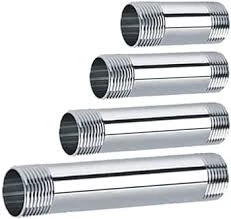-
Cangzhou Yulong Steel Co., Ltd.
-
Phone:
+86 13303177267 -
Email:
admin@ylsteelfittings.com
- English
- Arabic
- Italian
- Spanish
- Portuguese
- German
- kazakh
- Persian
- Greek
- French
- Russian
- Polish
- Thai
- Indonesian
- Vietnamese
- Zulu
- Korean
- Uzbek
- Hindi
- Serbian
- Malay
- Ukrainian
- Gujarati
- Haitian Creole
- hausa
- hawaiian
- Hebrew
- Miao
- Hungarian
- Icelandic
- igbo
- irish
- Japanese
- Javanese
- Kannada
- Khmer
- Rwandese
- Afrikaans
- Albanian
- Amharic
- Armenian
- Azerbaijani
- Basque
- Belarusian
- Bengali
- Bosnian
- Bulgarian
- Catalan
- Cebuano
- China
- China (Taiwan)
- Corsican
- Croatian
- Czech
- Danish
- Esperanto
- Estonian
- Finnish
- Frisian
- Galician
- Georgian
- Kurdish
- Kyrgyz
- Lao
- Latin
- Latvian
- Lithuanian
- Luxembourgish
- Macedonian
- Malgashi
- Malayalam
- Maltese
- Maori
- Marathi
- Mongolian
- Myanmar
- Nepali
- Norwegian
- Norwegian
- Occitan
- Pashto
- Dutch
- Punjabi
- Romanian
- Samoan
- Scottish Gaelic
- Sesotho
- Shona
- Sindhi
- Sinhala
- Slovak
- Slovenian
- Somali
- Sundanese
- Swahili
- Swedish
- Tagalog
- Tajik
- Tamil
- Tatar
- Telugu
- Turkish
- Turkmen
- Urdu
- Uighur
- Welsh
- Bantu
- Yiddish
- Yoruba

Dec . 03, 2024 21:10 Back to list
Exploring the Characteristics and Applications of Type B En 1092 1 Flange Standards
Understanding EN 1092-1 Type B Flanges A Comprehensive Overview
Flanges play a crucial role in various industries by providing a reliable means of connecting pipes, valves, pumps, and other equipment. Among the most widely recognized standards for flanges is EN 1092-1, which outlines specifications for different types of flanges used in piping systems. This article delves into the specifics of EN 1092-1 Type B flanges, highlighting their characteristics, applications, and advantages.
Understanding EN 1092-1 Type B Flanges A Comprehensive Overview
The dimensions and design of EN 1092-1 Type B flanges are standardized, which simplifies procurement and installation processes. These flanges typically feature a raised face that is machined to create a tight seal when bolted to another flange. This design is not only robust but also enables easy maintenance, as the flanges can be removed and reinstalled without damaging the sealing surface.
en 1092 1 type b

One of the significant advantages of EN 1092-1 Type B flanges is their versatility. They can be used in various piping systems, including those found in the oil and gas, chemical, and water treatment industries. The ability to withstand high temperatures and pressures makes them ideal for demanding environments. Additionally, their standardized sizing means they can easily be integrated into existing systems, reducing downtime during maintenance or upgrades.
Moreover, EN 1092-1 Type B flanges are compatible with a wide range of gaskets, enhancing their sealing capabilities. Proper gasket selection is essential to ensure leak-proof connections under various operational conditions. The raised face design also aids in accommodating thermal expansion and contraction, which can occur in fluctuating temperature environments.
When selecting flanges for a specific application, it is essential to consider factors such as material compatibility, pressure ratings, and temperature ranges. EN 1092-1 Type B flanges come with various pressure ratings, namely PN 6, PN 10, PN 16, PN 25, PN 40, and PN 63, allowing engineers to choose the appropriate flange based on the operational requirements of the system.
In conclusion, EN 1092-1 Type B flanges are an integral component in the realm of piping systems, offering a combination of strength, versatility, and reliability. Their standardized designs facilitate easy integration into various applications, while their robust construction ensures they perform under high pressure and temperature conditions. As industries continue to evolve and seek more efficient solutions, the importance of such flanges cannot be underestimated. Therefore, understanding the specifications and applications of EN 1092-1 Type B flanges is crucial for engineers, designers, and procurement specialists aiming to maintain safety and efficiency in their operations.
Latest news
-
ANSI 150P SS304 SO FLANGE
NewsFeb.14,2025
-
ASTM A333GR6 STEEL PIPE
NewsJan.20,2025
-
ANSI B16.5 WELDING NECK FLANGE
NewsJan.15,2026
-
ANSI B16.5 SLIP-ON FLANGE
NewsApr.19,2024
-
SABS 1123 FLANGE
NewsJan.15,2025
-
DIN86044 PLATE FLANGE
NewsApr.19,2024
-
DIN2527 BLIND FLANGE
NewsApr.12,2024
-
JIS B2311 Butt-Welding Fittings LR/SR 45°/90° /180°Seamless/Weld
NewsApr.23,2024











